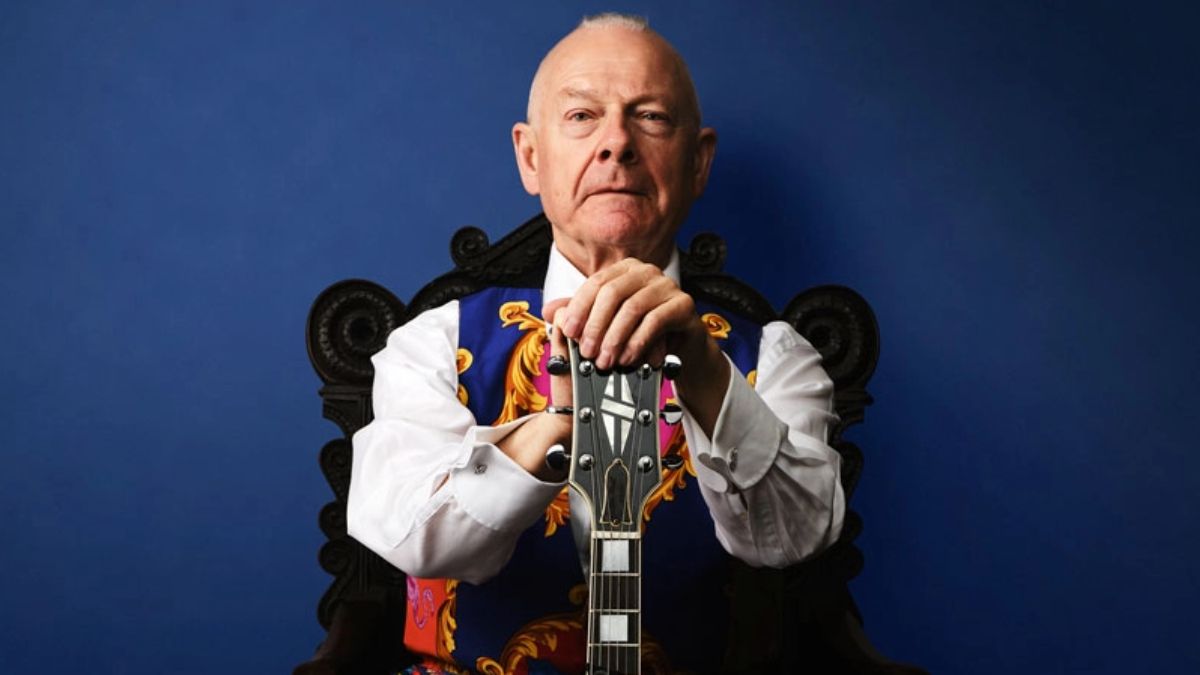Keith Richards' Guitar Tech Reveals Keef's Studio Rig
Keith Richards owns nearly a thousand guitars, so which does he typically use in the studio? Find out here.

“Bring me the usual, plus surprise me.”
That’s what Keith Richards would generally tell his longtime guitar tech, Pierre de Beauport, before the start of a session for 2015's Crosseyed Heart.
It was de Beauport’s enviable job to visit Richards’ equipment storage locker and fill his car with a selection of guitars and amps to provide a basic, “go to” setup, while also throwing in a few more “out there” options for experimentation.
With nearly a thousand guitars in Richards’ collection, there’s quite a lot from which to choose. “The usual” will invariably include several of Richards’ iconic Fender Telecasters such as the 1953 model he calls “Micawber” and the ’54 named Malcolm. Both of these are set up in the guitarist’s trademark five-string open G tuning (low to high: G, D, G, B, D, with the low E string removed).
There are also always a few Teles set up in six-string standard tuning, such as Richards’ ’59 with rosewood neck. Note that Richards has been using Ernie Ball strings for several decades; the company even makes a custom five-string set (.11 .15 .18p .30 .42) for the guitarist. The electric guitar selection for the Crosseyed Heart sessions always also included one of Richards’ vintage black Gibson ES-355s and at least one of his vintage Les Paul Juniors. Richards’ guitar and amp choices all tend to be vintage. A Danelectro electric sitar is heard on “Suspicious.”
And as Richards played bass on all but one of the album’s tracks, another key electric instrument was a 1962 Hoffner hollowbody bass guitar used throughout the album sessions. Richards’ stock guitar amp setup in the studio is a tweed Fender Champ with an eight-inch speaker, combined with a tweed Fender Harvard modified with a 6L6 output stage tube and a 12” speaker, nicknamed “One Love.”
The modification makes the Harvard a single-ended or Class A amp, like the Champ. “The Harvard adds a little bottom end and clarity,” de Beauport explains. “And Keith is always plugged into Input 2 on the Champ, not Input 1. We turn the Champ up to about 4, no higher—to where it’s just starting to break up.” Amps for overdubs included a tweed Fender Bandmaster with three 10-inch speakers and an early-Sixties Watkins Joker. Less well known than the popular Watkins Dominator, the Joker is truly bizarre.
All the latest guitar news, interviews, lessons, reviews, deals and more, direct to your inbox!
“It’s a four-channel amp with a Watkins Copicat tape delay build in,” says de Beauport. “It has this other effect that isn’t really reverb, called ‘Halo.’ I think that’s only on channel 4. And it has a mic stand that pulls out of the top. It’s one of the most whacked-out amps of the Sixties. There aren’t a lot of them. Finding one that works has been fun. They’re red.” Richards’ main acoustic guitar for the sessions was his 1958 Martin 00-21. But as the album delves deeply into his folk and country roots, many other acoustics came into play.
“Goodnight Irene” features a truly historic Keef guitar: his 1963 Harmony 1270 12-string acoustic, heard on classic Stones tracks from the Sixties such as “Good Times Bad Times,” “Play with Fire,” “Not Fade Away” and "Tell Me.” Also heard on “Goodnight Irene” is a cavaquinho, a small, guitar-like instrument used in Portuguese and Brazilian music. Richards’ guitar solo on “Robbed Blind” was played on a 2008 Vicente Carillo classical guitar. And the acoustic mix on “Just a Gift” includes one of Richards’ Martin tiples.
“A tiple is a four-course, 10-string ukulele with two triple courses and two doubles,” de Beauport explains. “But I changed the spacing on the nut to make it five double courses and tuned it to open G.” So, in essence, it’s an acoustic, short-scale counterpart to Richards’ open-G Telecasters—a completely unique instrument. As de Beauport notes: “You walk into the studio and it’s not just a room full of Teles. It’s everything…all over the place.”
In a career that spans five decades, Alan di Perna has written for pretty much every magazine in the world with the word “guitar” in its title, as well as other prestigious outlets such as Rolling Stone, Billboard, Creem, Player, Classic Rock, Musician, Future Music, Keyboard, grammy.com and reverb.com. He is author of Guitar Masters: Intimate Portraits, Green Day: The Ultimate Unauthorized History and co-author of Play It Loud: An Epic History of the Sound Style and Revolution of the Electric Guitar. The latter became the inspiration for the Metropolitan Museum of Art/Rock and Roll Hall of Fame exhibition “Play It Loud: Instruments of Rock and Roll.” As a professional guitarist/keyboardist/multi-instrumentalist, Alan has worked with recording artists Brianna Lea Pruett, Fawn Wood, Brenda McMorrow, Sat Kartar and Shox Lumania.



